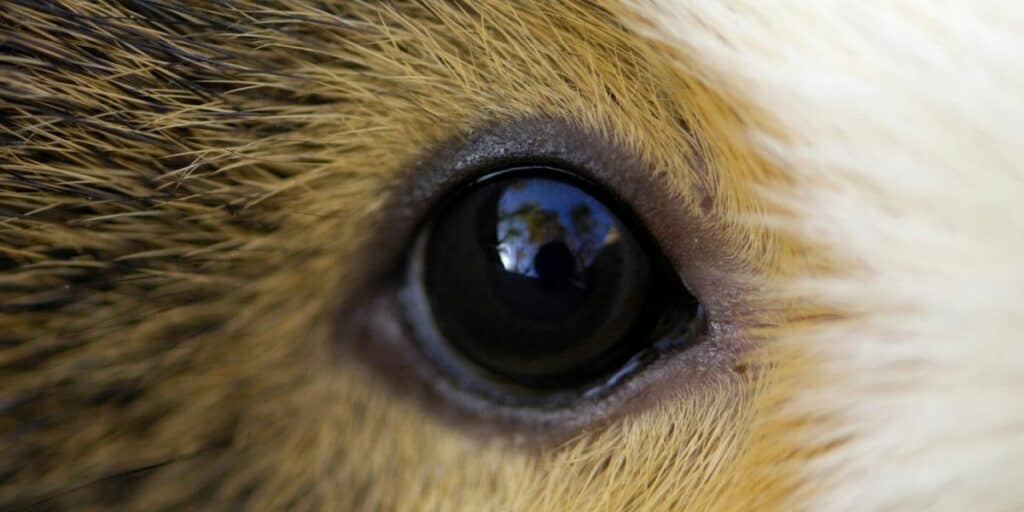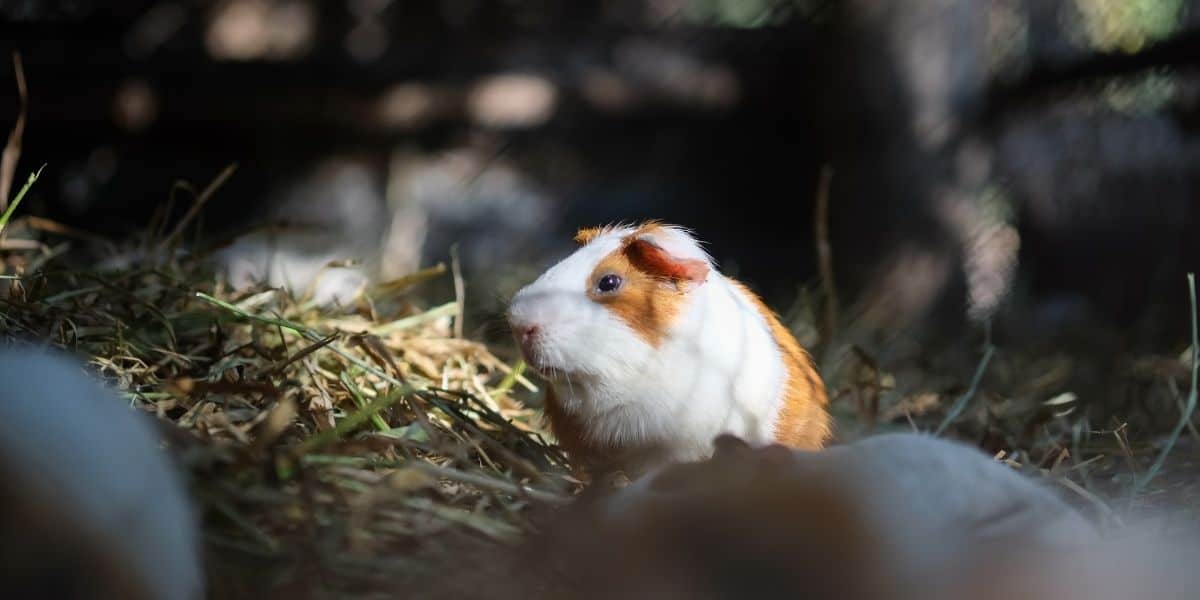Can guinea pigs see in the dark? The truth is that no one is certain how well guinea pigs can see in the dark, but we do know that they do have some degree of night vision.
Guinea pigs have very limited vision at night, which is why they use a combination of their whiskers and other senses to navigate around at night. Guinea pigs are diurnal creatures which means they sleep at night and are most active through the day so they have no need for good night vision.
Have you seen your Guinea Pig roaming around their hutch or enclosure when it’s dark?
Let’s see what we can find out about your Guinea Pigs Night vision.
Table of Contents
Guinea Pigs are Diurnal
People think that guinea pigs are nocturnal like rats and hamsters, but this is not the case. Guinea pigs are diurnal, meaning that they – like us – sleep at night and are awake during the day.
Structure of the eye
RODS AND CONES AND PHOTOPIGMENT
The photoreceptors in the eye are called rods and cones, and they are what allow us to see.
Rod photoreceptors activate as a response to levels of brightness and play a role in the sensitivity of our vision. Rod photoreceptors are more active when our surroundings are dim. These photoreceptors work as the photopigment within the receptors absorbs light.
Conversely, cone photoreceptors are more active in bright environments and play a role in the clarity and sharpness of what we see. [Source]
The eyes of diurnal animals and nocturnal animals are differently structured.

In a nocturnal animal, the photopigment in the rods of the eye absorbs light but gets replaced quickly, allowing the eyes to continue to function well at night.
In a diurnal animal, the photopigment in the rods of the eye absorbs light and then becomes inactive. Slow replacement of this photopigment makes it hard to see when light is dim – for example, at night.
PUPIL SIZE AND SHAPE
Nocturnal animals also have larger pupils than diurnal animals.
Larger pupils allow more light into the eye, and the more light that is allowed into the eye, the better we can see. So, larger pupils benefit the nocturnal animal at night, but this does come with a tradeoff.
Although nocturnal animals can make out the edges of shapes in the darkness, they have more difficulty with the sharpness of vision.
Diurnal animals, however, have much sharper vision in the right levels of light.
The nocturnal pupil is also more slit-like, where the diurnal pupil is round. The slit-like pupil controls the amount of light that enters the eye during the daytime so that the eye is not damaged.
But how does it relate to Guinea Pigs?
As we mentioned above, the guinea pig is a diurnal animal, and so they have poorer vision at night and more accurate vision during the day.
Just how well can a guinea pig see at night, though? We are not entirely sure how well a guinea pig sees in the dark from a scientific point of view, but we do know that they can navigate their territory in the dark.
Like other diurnal animals, guinea pigs likely have a degree of night vision, but this is probably limited. To make up for this limited night vision, guinea pigs rely on scent and memory to help them to navigate their surroundings.
Guinea Pig eyesight Facts
Now that we have established that guinea pigs can see in the dark, there are a few other things that can be helpful to know about your guinea pig’s vision.
Do they have good eyesight?
While there are some unknowns about guinea pig vision, we do know that their eyesight is not all that great. Researchers have been able to determine that the average guinea pig has good vision for up to three-feet – that is less than a human being.
Do Guinea Pigs have a wide field of vision?
A guinea pig’s eyes are set on the side of their head and allow for a 340-degree field of vision. This wide visual field is ideal for spotting predators, but it is a problem when it comes to depth perception.
Having eyes on the side of your head makes it difficult to judge depth, so while a guinea pig’s eye takes in a lot of images at one time, those images are flat and make it difficult to judge distance.
Do Guinea Pigs see in color?
Guinea pigs can see in color; in fact, they can see most colors! And with poor eyesight and no depth perception, color can be a helpful factor in distinguishing items in your guinea pig’s field of vision!
Do Guinea Pigs make up for their poor sight in other ways?
We mentioned above that guinea pigs rely on memory and scent to navigate in the dark – this is also true for the daytime! Because guinea pigs do not have the best vision, they often depend on signs and scent to scan their surroundings in the daytime too.
Also, guinea pigs use their hearing to get around. Did you know that a guinea pig has better hearing than a human?
Their better hearing is due to the funnel shape of the ear and the sharp directional sensitivity that allows them to pinpoint the direction of a sound.
The hairs on a guinea pig’s muzzle also play a role in navigation. These tactile hairs give the guinea pig information about their surroundings – for example, whether they can fit through an opening or whether that opening is too small.
Your Guinea Pigs Vision Summary
In short, your guinea pig can see in the dark, and although that vision is limited, it is supported by memory, scent, sound, and tactile whiskers on their muzzle.
Your guinea pig’s eyesight is also limited during the day; however, they can see colors and have a wide field of vision even if it lacks depth.





